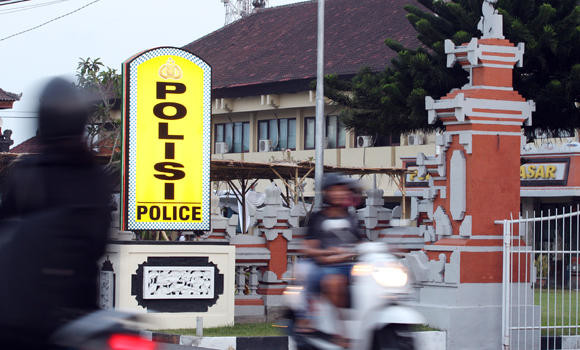Mohan Kumar’s M.O. was simple and deadly.
The one-time Indian schoolteacher would approach young women in the southern city of Mangalore. He would introduce himself as a government teacher, according to the New Indian Express. He’d ply them with compliments and promises of marriage and eventually win them over.
He’d lure them to a hotel room, sleep with them, and convince them to swallow a small pill he said was for birth control.
In reality, it was cyanide.
When the poison had finished its work, Kumar robbed his victim and hid her body. Then he returned to the city, in search of the next one.
The man known as “Cyanide Mohan” in the Indian press, who was just arrested in Indonesia after years on the lam, is believed to have killed 20 women in this manner. He’s convicted of murdering at least three.
Kumar was sentenced to death for the three killings in 2013, but escaped the country and was hiding out in Australia, he told authorities. The Associated Press reported that Kumar was arrested after he arrived at the Bali airport Sunday. Officials there had received a red notice from Interpol and were tipped off by Australian police.
Denpasar Police chief detective Reinhard Habonaran Nainggolan told the AP that Kumar is being questioned and Indonesian police are coordinating with Indian diplomats. Kumar could be deported within the next few days. He might also be extradited, which can take a month or more.
In India, Kumar is seen as a fearsome serial killer, someone who preyed on young, poor women desperate to marry.
High-ranking Indian police officer Gopal Hosur told the Times of India in 2009 that Kumar worked strategically, spending about two months grooming his victims while seeking out new ones. He told his victims that he would be willing to marry them without a dowry, “and this was probably what lured most of them to his deathly embrace,” the newspaper said.
“Not being asked for dowry is a big thing in these parts, and he took advantage of that vulnerability. Many women left their homes with their best clothes and jewelery,” Chandra Gupta, superintendent of police in Bellary, told the Calcutta-based Telegraph.
Kumar was careful not to draw the attention of his victims’ friends or families, so when young women went missing, he was never a suspect. He had previously been charged with attempted murder after pushing a young woman off a bridge, police told the Telegraph, but was not convicted.
It wasn’t until a 22-year-old named Anitha went missing in June 2009 that the cases began to come together. Her body was found at a bus stand and buried without being identified, according to the Times of India. Police treated it as an unnatural death, according to the Times of India.
Meanwhile, more women in Mangalore were dying. According to the Telegraph, nine women were killed for the jewelry they were carrying, their bodies abandoned in public toilets near bus stations. It’s thought that Kumar killed four women after Anitha.
Eventually, calls from Anitha’s phone lead officers investigating her disappearance to Kumar’s residence in a village near Mangalore. There, they found the young woman’s jewelry, along with several mobile phones and eight cyanide tablets, according to the Times of India.
Police told the Telegraph they also found a diary in which Kumar had kept a record of his murder attempts.
“He struck off the names of those he’d had no success with by marking their names in red,” the newspaper reported. “Of every 10 women he met, he apparently succeeded with two.”
“He is not your average psychopath, but a brilliant strategist,” special public prosecutor Cheyabba Beary told the New Indian Express.
Kumar was arrested in 2009, and put on trial two years later for 20 murders of young women over the course of five years. He was sentenced to death after being convicted of only three.
“This is a case that pricks and shocks not just the judicial conscience but also of the society,” Judge B. K. Naik said at the sentencing, according to the Deccan Chronicle.
But Kumar fled the country, and had been hiding in Australia until now, according to the Associated Press.
He was on his way to a 15-day vacation in Bali when he was arrested.
India’s ‘Cyanide Mohan’ serial killer finally apprehended
India’s ‘Cyanide Mohan’ serial killer finally apprehended











